Tips for Organizing and Rotating Your Wall Art Collection
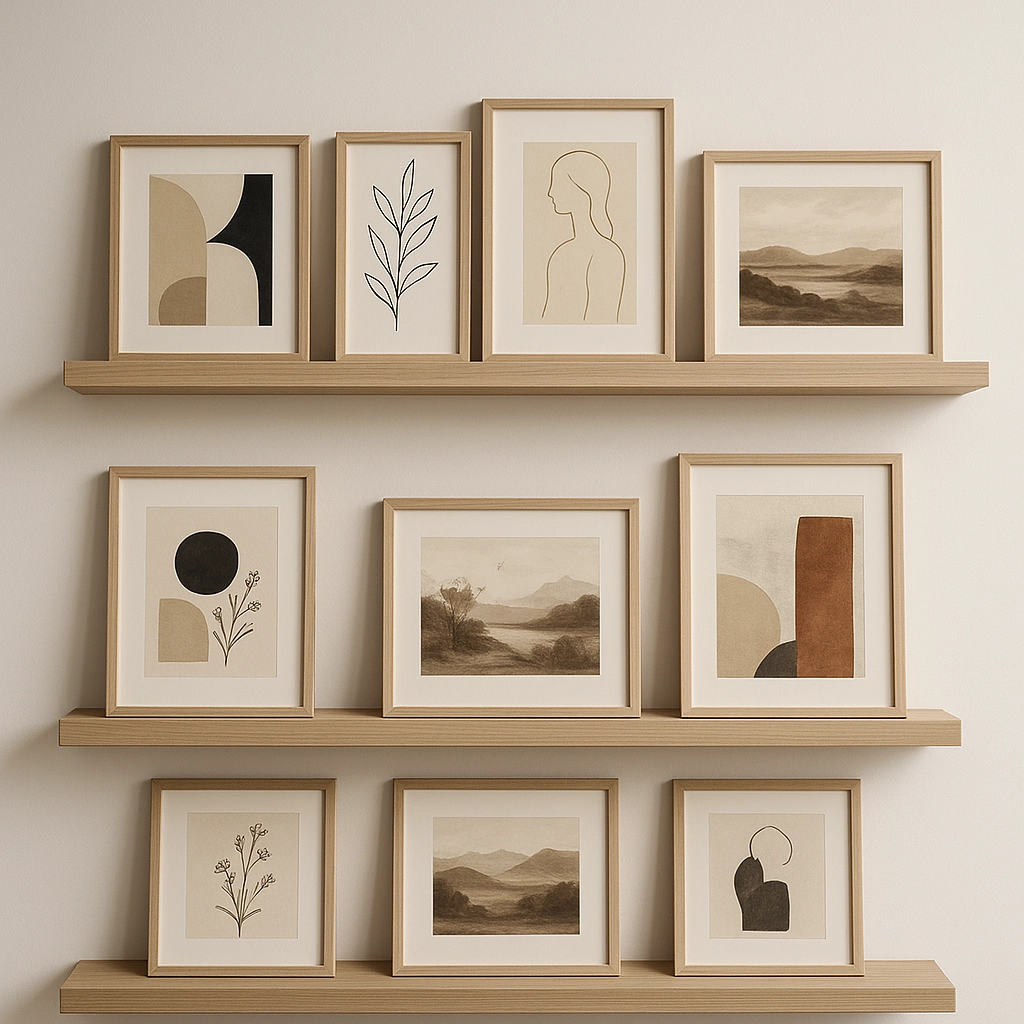
Tips for Organizing and Rotating Your Wall Art Collection
A thoughtfully organized wall art collection does more than just beautify your space—it preserves your investment, keeps your home environment fresh, and ensures you can fully appreciate each piece you’ve carefully selected. Whether you’re working with original paintings or curated retro wall art ideas, proper organization and regular rotation not only extend the life of your artwork but also breathe new energy into your living spaces. By implementing smart cataloging systems and creating a rotation schedule, you’ll transform your walls from static displays into dynamic, evolving galleries that continue to inspire.
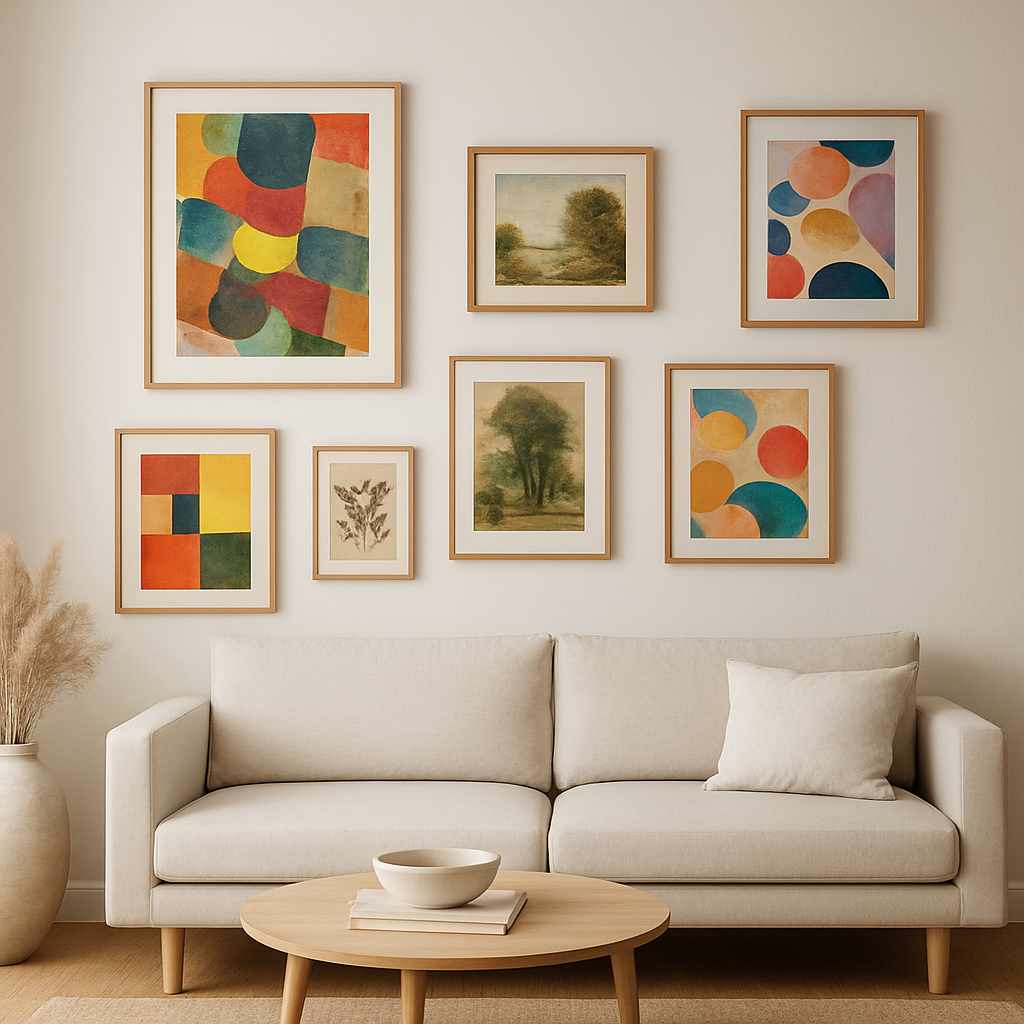
The foundations of art organization — why it matters
Organization isn’t just about keeping things tidy—it’s about protecting your investment, both financial and emotional. Every piece in your collection has value, whether measured in dollars or personal significance. Proper organization helps track provenance (the history of ownership), preserves condition, and allows you to enjoy your entire collection over time rather than relegating certain pieces to permanent storage.
When you organize your collection systematically, you’re essentially creating a personal museum. This structured approach helps you make informed decisions about acquisitions, display choices, and even insurance coverage—ultimately enhancing your enjoyment and the longevity of each piece.
Common Collection Pitfalls
Many collectors fall into predictable traps that diminish both their enjoyment and their artwork’s condition:
- neglecting to document purchases and provenance information
- storing artwork in damp basements or hot attics
- overcrowding walls to the point that individual pieces lose impact
- displaying the same pieces indefinitely, exposing them to prolonged light damage
- handling artwork without proper precautions, leaving fingerprints or causing tears
Art handling experts recommend addressing these issues immediately—even starting small with basic documentation and proper storage solutions can make a significant difference in preserving your collection’s integrity.
Cataloging and documenting your wall art
Creating a comprehensive catalog is the backbone of any well-maintained collection. Digital art cataloging with a dedicated app or spreadsheet is a game-changer for even modest collections, allowing you to track crucial details that might otherwise be forgotten over time.
For each piece, document the following information:
- title, artist, and creation date
- medium and dimensions (including frame dimensions)
- purchase information (date, price, seller/gallery)
- provenance history if available
- current location in your home or storage
- condition notes and any restoration history
- high-quality photographs (front, back, and close-ups of signatures or damage)
This detailed documentation not only helps with insurance claims if needed but also increases value when you eventually sell or pass down artwork.
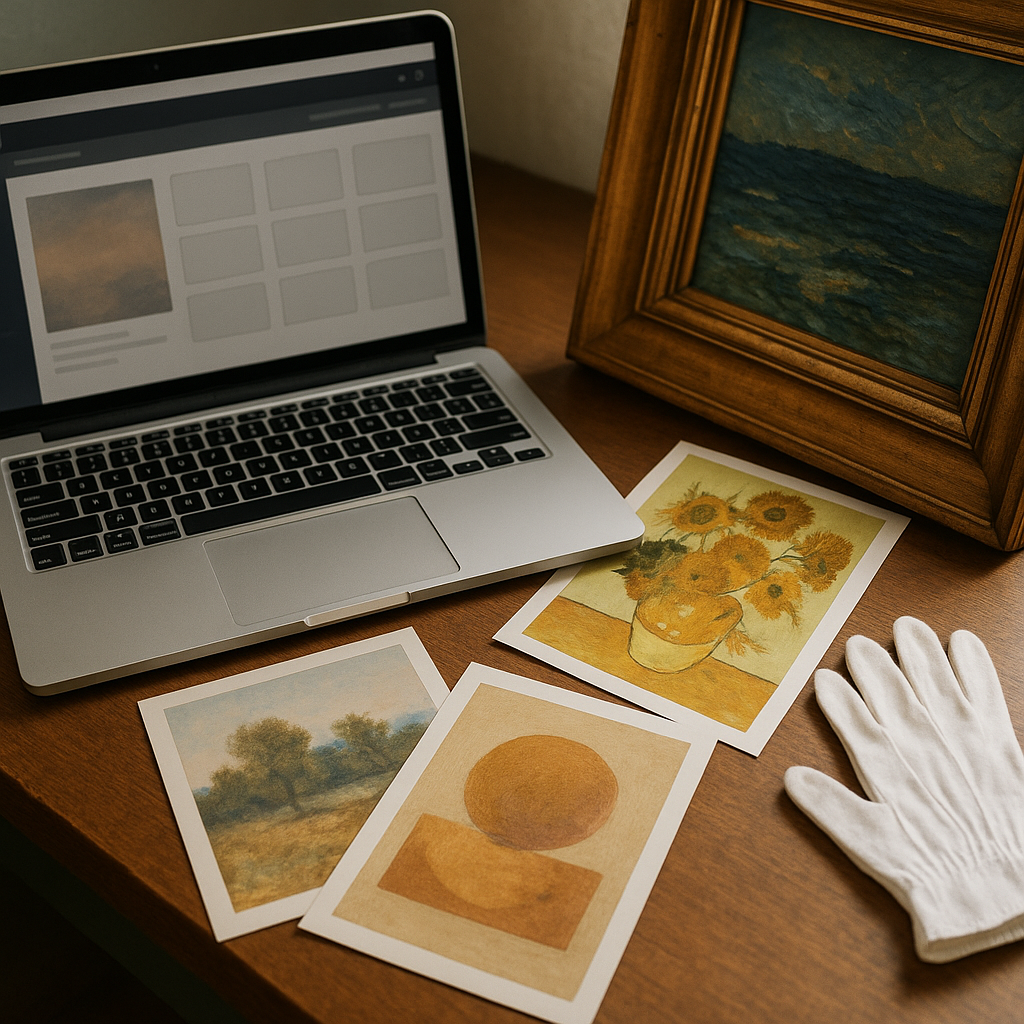
Pieces with well-documented histories typically command higher prices and maintain stronger provenance records.
Choosing the Right Tools — Apps & Software
Several excellent tools can streamline the cataloging process:
- Artwork Archive: A comprehensive option with condition reporting, location tracking, and market analytics (subscription-based)
- My Art Collection: User-friendly mobile app ideal for collectors with under 100 pieces
- CollecOnline: Offers robust features including exhibition history tracking and multiple collection management
- Excel/Google Sheets: Free option that works well for beginner collectors with basic templates available online
Ready to build your own collection? Start browsing inspiring wall art prints by style to add thoughtfully right from the start. Beginning with careful documentation makes future organization infinitely easier as your collection grows.
Smart storage and art preservation
Proper storage and preservation keep both canvas and print wall art in prime condition for your future displays. Even when pieces aren’t currently hanging, they require thoughtful care to maintain their quality and value.
For optimal storage, follow these professional guidelines:
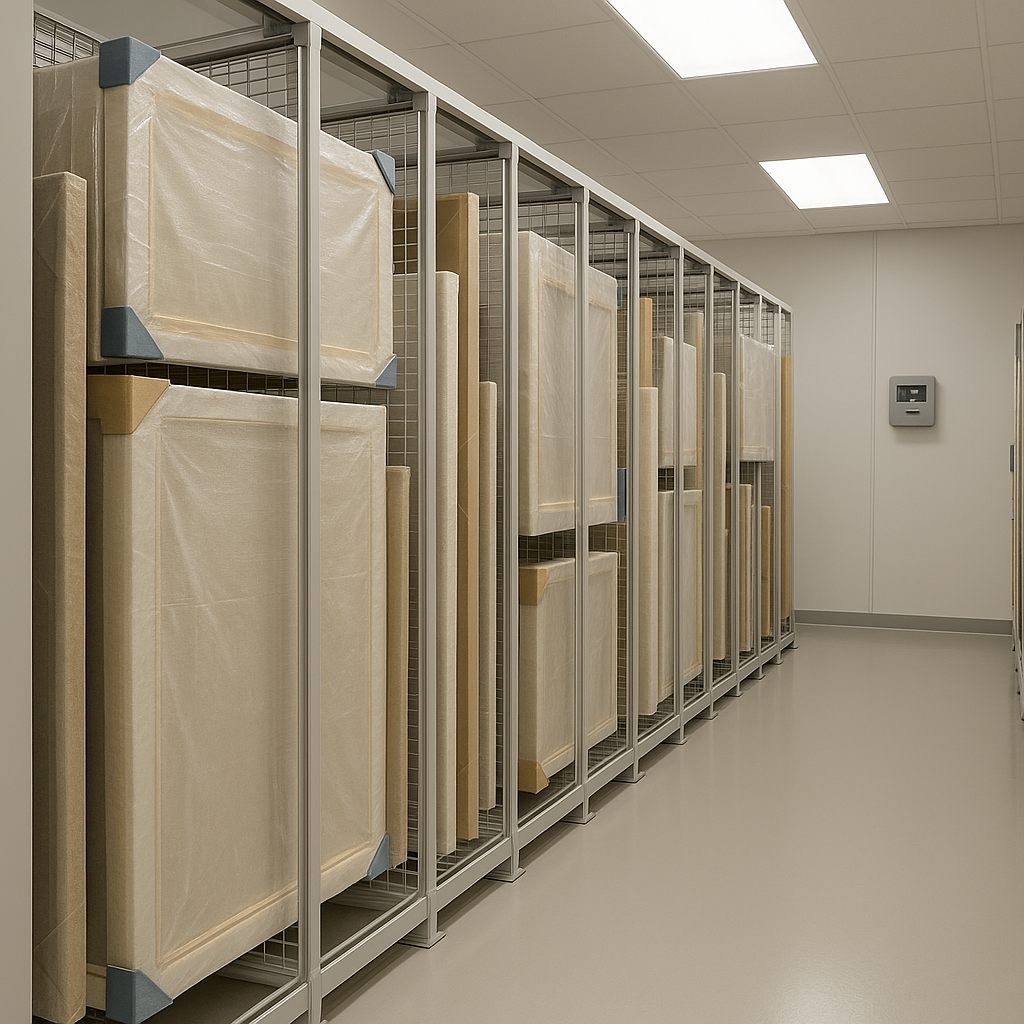
- maintain a consistent environment (65-70°F with 45-55% relative humidity)
- use acid-free materials for wrapping and protecting artwork
- store pieces vertically rather than horizontally when possible
- keep artwork elevated off the floor to prevent water damage
- implement a pest management system in storage areas
When storing framed pieces, add corner protectors and ensure adequate spacing between works. For unframed canvases, interleave with acid-free glassine paper and avoid direct contact with other surfaces that might transfer oils or acids.
Physical & Environmental Risks to Avoid
Your collection faces numerous environmental threats that proper storage mitigates:
- UV exposure: Can fade pigments and degrade paper—use UV-filtering glass in frames and keep stored art away from sunlight
- Humidity fluctuations: Cause canvas to stretch and contract—use dehumidifiers in damp spaces
- Dust and airborne particles: Settle on surfaces and can be abrasive—cover stored works and regularly dust displayed pieces
- Physical damage: Often occurs during moves or rearrangement—use proper art handling gloves and techniques
- Pests: Moths and silverfish can damage paper-based works—implement routine inspections
Consider investing in display cases with conservation-grade materials for particularly valuable or sensitive works. The initial investment pays dividends in preserved artwork condition over decades.
Displaying and rotating your wall art like a pro
The way you display your collection dramatically impacts both its visual appeal and physical condition. Professional display approaches not only showcase your pieces effectively but also facilitate easier rotation.
A simple quarterly art rotation schedule keeps your walls dynamic and helps you appreciate every piece in your collection. This practice prevents “art blindness”—when you stop truly seeing pieces that have hung in the same spot for years—while distributing light exposure more evenly across your collection.
Consider these display systems for easier rotation:
- Gallery rails: Install along the top of walls to hang multiple pieces from adjustable wires
- Picture ledges: Allow for casual layering and simple rearrangement without additional wall holes
- Museum putty or adhesive hooks: For lighter pieces when you want to avoid wall damage
- Modular display systems: Customizable arrangements that grow with your collection
When arranging pieces, professional designers recommend maintaining consistent spacing (typically 2-3 inches between frames) and considering sight lines from various positions in the room. For gallery walls, start with your largest piece as an anchor and build outward.
Planning Themed Rotations or ‘Gallery’ Events at Home
Transform routine rotation into an engaging experience by creating themed displays that tell a story or evoke a particular feeling. Consider rotations based on:
- seasonal colors and motifs
- artistic movements or time periods
- subject matter (landscapes, portraits, abstracts)
- emotional tone (calming, energizing, contemplative)
Sometimes, rotating in authentic vintage pieces adds historic character and depth to your seasonal displays. An authentic vintage wall art piece alongside contemporary works creates fascinating dialogues across time periods and artistic traditions.
Make each rotation an occasion by inviting friends for an “opening night” of your new arrangement.
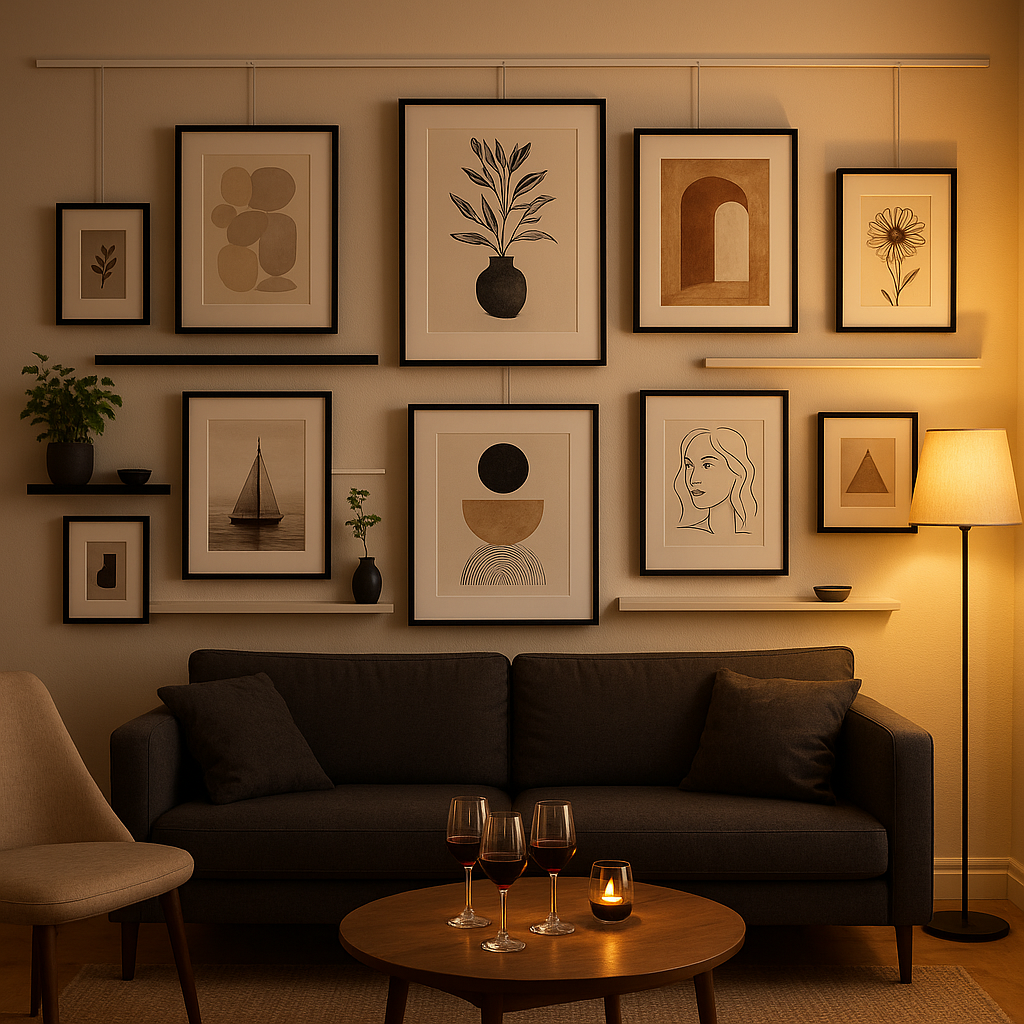
This practice not only shares your passion but also motivates regular refreshes of your display.
Maintaining the value and joy of your collection
A well-maintained collection requires ongoing attention beyond the initial organization. Reassessing your collection yearly helps protect value, supports insurance, and preserves your legacy for future generations or potential sales.
Schedule these maintenance activities:
- annual condition assessments (check for new damage, fading, or frame issues)
- updates to your inventory database (including new acquisitions and location changes)
- gentle cleaning using appropriate conservation techniques
- frame repairs or glass replacements as needed
- professional appraisals every 3-5 years for valuable pieces
Keep all documentation—including receipts, certificates of authenticity, and provenance records—in a fireproof container or digital cloud storage with backups. This preparation ensures your collection maintains its value and historical significance.
Consider creating a “collection directive” outlining your wishes for individual pieces should you decide to sell or bequeath them. This document helps preserve the stories behind your artwork and ensures your curation efforts extend beyond your personal enjoyment.
Explore more curated collections and find statement pieces for your next rotation in our Bauhaus wall art poster series.
Conclusion
Organizing and rotating your wall art collection transforms it from a static display into a living, evolving expression of your aesthetic sensibilities. The effort you invest in proper documentation, storage, and display not only preserves the physical integrity of each piece but also continually refreshes your living environment.
By implementing a regular rotation schedule and maintaining comprehensive records, you’ll develop a deeper connection with your entire collection while maximizing both its longevity and financial value. Whether you’re a seasoned collector or just beginning your art journey, these organization practices will ensure your walls remain sources of inspiration and joy for years to come.
Start with small steps—catalog what you have, assess your current display and storage conditions, and plan your first rotation. The rewards of a well-organized collection—both aesthetic and practical—will quickly become apparent as you rediscover pieces you’ve forgotten and see familiar works in new contexts.
Frequently Asked Questions
How often should I rotate my wall art?
Most experts suggest a quarterly or seasonal rotation; more frequent changes are ideal for large collections.
What’s the best way to catalog my art collection?
Digital collection apps (like Artwork Archive or My Art Collection), spreadsheets, or photo inventories work well; include photos and details for each piece.
How can I protect artwork that’s not on display?
Store in cool, dry, dark settings; use acid-free materials; avoid stacking or rolling; climate control is key for valuable works.
What are creative ways to display wall art?
Try a salon-style wall, gallery rails for easy rearrangement, themed room displays, or picture ledges for flexible setups.
Do I need to insure my wall art collection?
For collections of significant value, yes—talk to your insurer about appraisals and coverage; keep documents updated and secure.